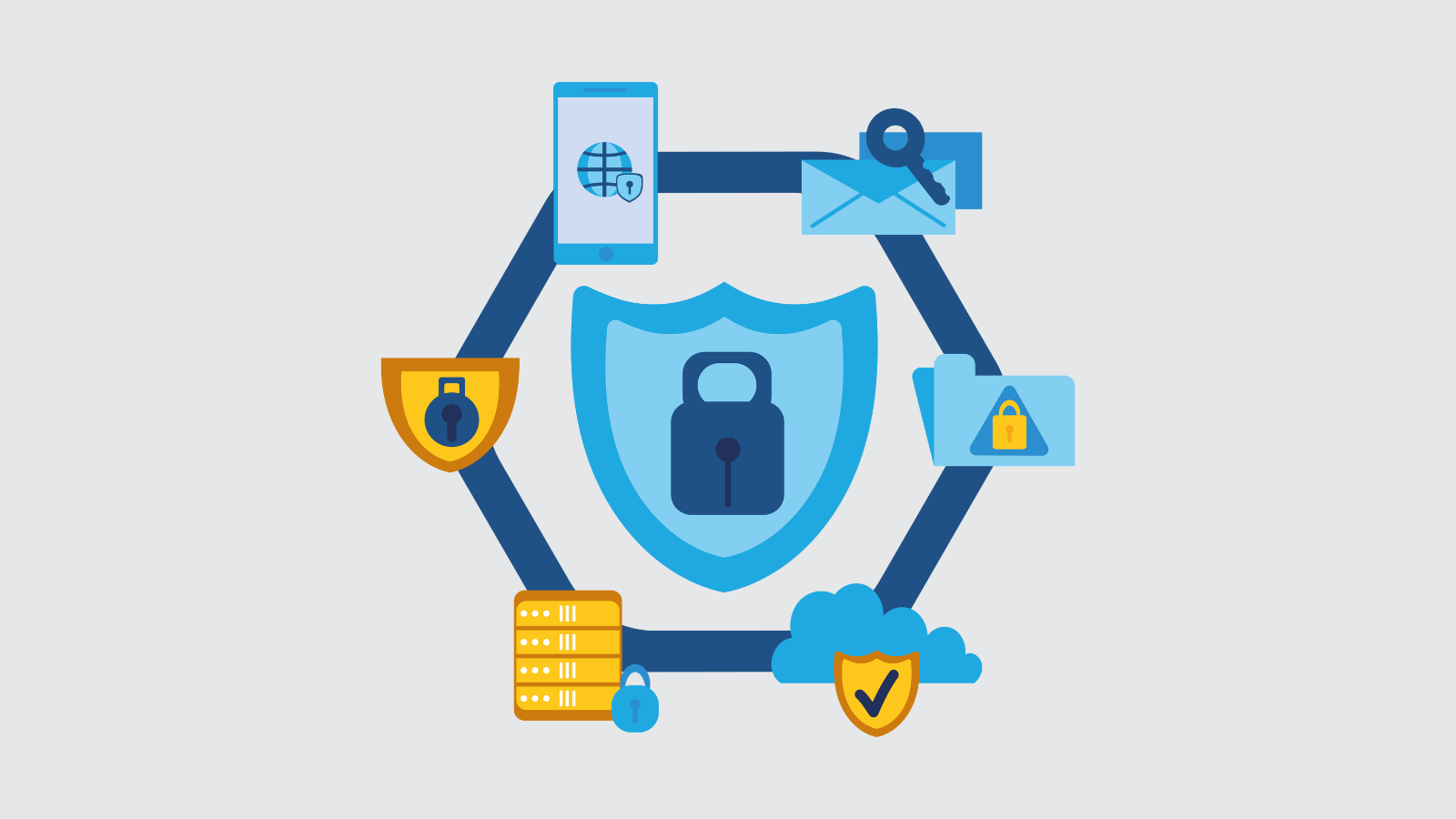Building an Adaptable Cybersecurity Program in 2025: The Future of Digital Defense
Now that we’ve entered 2025, the cybersecurity landscape is evolving at a rapid pace. With the expansion of digital technologies, the rise of new threats, and the increasing reliance on cloud infrastructure and remote work, companies must rethink how they approach cybersecurity. It’s become clear that one-size-fits-all security solutions are no longer sufficient, adaptability is key.
Here’s a guide on how companies can build a flexible, adaptive cybersecurity program that can withstand future threats.
1. Adopt a Risk-Based Approach
The first step to building an adaptable cybersecurity program is understanding that not all risks are equal. While some threats may be immediate, others may have a long-term impact. A risk-based approach focuses on identifying your organization’s most critical assets and the potential threats to those assets and then tailoring your defenses accordingly.
How to Implement:
-
Risk Assessments: Regularly perform risk assessments to identify potential vulnerabilities and threats specific to your organization. This helps prioritize security measures.
-
Business Impact Analysis (BIA): Understand the consequences of a security breach on your business operations. This helps in making informed decisions about which assets need stronger protection.
-
Dynamic Threat Modeling: Continuously adjust your threat models based on emerging trends and incidents in the cybersecurity landscape.
In 2025, perimeter-based security will be less effective than ever. The traditional “castle-and-moat” model assumes that anything inside the company network is trustworthy. However, with an increasing number of devices and employees working remotely, and cybercriminals becoming more adept at bypassing traditional defenses, companies need to operate on the assumption that no one, even insiders, should be trusted by default.
Zero Trust (ZT) is an identity-centric approach that assumes every user and device, regardless of location, must be authenticated and authorized before accessing any resources.
How to Implement:
-
Identity and Access Management (IAM): Implement robust IAM systems to ensure that every access request is verified based on a user’s identity and role.
-
Least-Privilege Access: Limit access to only the information and tools necessary for a given task or role.
-
Multi-Factor Authentication (MFA): Require MFA for all users, especially for accessing critical systems or data.
With the increasing complexity of cybersecurity threats, manual monitoring and response can no longer keep up. Companies need to leverage automation and artificial intelligence (AI) to detect, respond to, and mitigate threats more effectively and faster.
AI and machine learning can identify patterns in large datasets and detect anomalous behavior that may be indicative of a security breach. Automation tools can streamline incident response, reducing human error and response time.
How to Implement:
-
Automated Threat Detection: Use AI-driven solutions to monitor networks and systems for abnormal behavior, which could signal potential cyber threats.
-
Incident Response Automation: Develop and integrate automated playbooks for incident response, allowing security teams to quickly respond to and mitigate threats with minimal manual intervention.
-
Threat Intelligence Feeds: Incorporate real-time threat intelligence into your automated systems to stay ahead of emerging attack vectors.
4. Prioritize Employee Training and Awareness
According to Verizon’s 2024 Data Breach Investigations Report, human error remains one of the leading causes of cybersecurity breaches [1]. In 2025, a highly adaptable cybersecurity program must prioritize the human element. Continuous training and awareness campaigns are essential to ensure that employees are equipped to identify phishing attempts, practice good password hygiene, and recognize potential security risks.
How to Implement:
-
Ongoing Security Awareness Training: Conduct regular cybersecurity training sessions for all employees, from executives to entry-level workers. Include modules on recognizing phishing emails, secure password practices, and the importance of multi-factor authentication.
-
Simulated Phishing Campaigns: Run simulated phishing tests to train employees on how to spot suspicious emails or social engineering attempts.
-
Cultural Change: Foster a security-first culture where employees are encouraged to report suspicious activities without fear of retribution.
As companies increasingly migrate to the cloud, ensuring the security and privacy of sensitive data has become paramount. Cloud environments are dynamic and scalable, but they also come with their own set of challenges, such as shared responsibility models, multi-cloud configurations, and third-party integrations.
In 2025, an adaptable cybersecurity program must include a strategy for securing cloud-based resources and ensuring compliance with data privacy regulations like GDPR, CCPA, and others.
How to Implement:
-
Cloud Security Posture Management (CSPM): Use CSPM tools to continuously monitor cloud configurations for misconfigurations, vulnerabilities, and compliance violations.
-
Encryption: Implement end-to-end encryption for data both at rest and in transit, especially when dealing with sensitive customer or proprietary data.
-
Third-Party Risk Management: Regularly audit third-party cloud providers and partners to ensure they meet your security standards.
The future of cybersecurity will demand constant vigilance. To stay ahead of evolving threats, companies need to implement a continuous monitoring strategy that allows them to detect and respond to security incidents in real-time.
How to Implement:
-
Security Information and Event Management (SIEM): Use SIEM platforms to collect and analyze logs from various sources in real time, providing insights into potential security incidents.
-
Security Operations Center (SOC): Establish an in-house or outsourced SOC to provide 24/7 monitoring and threat response.
-
Proactive Threat Hunting: Go beyond reactive defense by actively seeking out potential threats within your network before they can cause harm.
Even with the most advanced security measures, breaches can still occur. The key to minimizing damage is having a well-developed, tested incident response plan (IRP). This plan should be agile enough to adapt to new threats and should be practiced regularly to ensure that all stakeholders are prepared.
How to Implement:
-
Incident Response Team (IRT): Establish a dedicated team responsible for managing security incidents. This team should include experts in various fields such as forensics, legal, and public relations.
-
Tabletop Exercises: Regularly run tabletop exercises to simulate different types of cyberattacks and test your organization’s response.
-
Post-Incident Analysis: After any security breach, conduct a thorough review to identify lessons learned and improve your security posture for the future.
8. Implement Continuous Improvement and Agile Methodology
The cybersecurity landscape is in a constant state of flux, and what works today may not work tomorrow. Building an adaptable cybersecurity program requires a commitment to continuous improvement. Cybersecurity strategies must evolve in real-time to meet new threats, changing business needs, and technological advances.
How to Implement:
-
Agile Security Framework: Treat cybersecurity as an ongoing project with regular updates, assessments, and improvements rather than a one-off initiative.
-
Feedback Loops: Regularly review security incidents, lessons learned, and new threats to refine security policies and strategies.
-
Collaboration and Information Sharing: Collaborate with industry peers, government agencies, and cybersecurity organizations to stay informed of emerging threats and best practices.
IE’s Cybersecurity Consulting Services Can Help You Adapt
As the digital landscape continues to grow and change, businesses must embrace adaptability in their cybersecurity strategies. By adopting a risk-based approach, implementing Zero Trust, leveraging AI for threat detection, and continuously improving your security posture, you can better prepare your company for the challenges of 2025 and beyond.
The key takeaway is that cybersecurity in 2025 is no longer a static, one-time initiative. It’s a dynamic, ongoing process that must evolve with the times, driven by a culture of constant vigilance and innovation. An adaptable cybersecurity program will not only protect your organization from emerging threats but will also provide a foundation for growth and success in the ever-changing digital world. Internetwork Engineering, a Presidio Company, offers extensive cybersecurity advisory services and we’re here to help you strengthen your infrastructure.
Sources:
[1] https://www.verizon.com/business/resources/reports/dbir/






